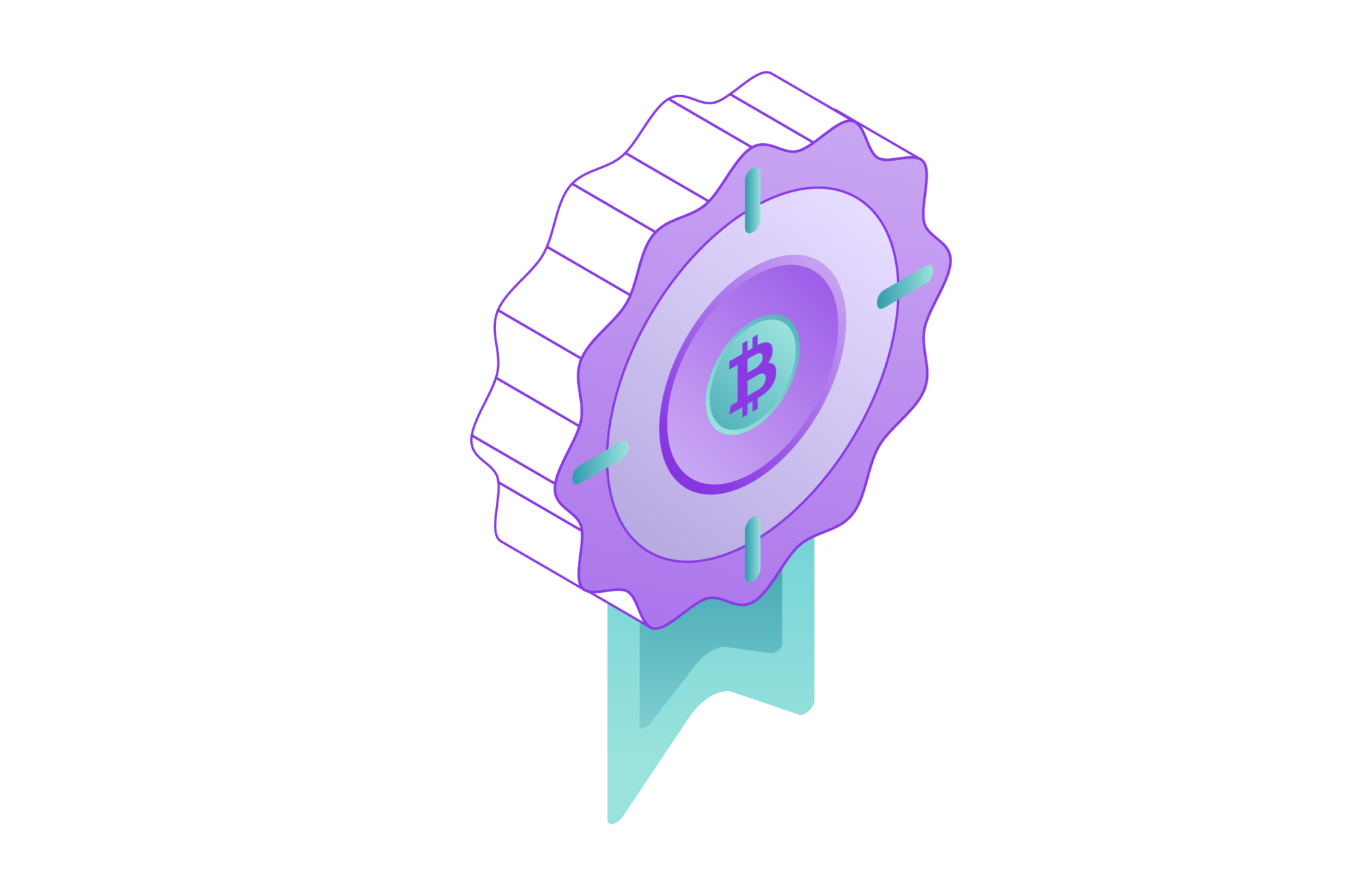
This article delves into the intricacies of liquidity tokens, explaining their workings, benefits, and the role they play in modern financial markets. Whether you are new to the concept or looking to deepen your understanding, this comprehensive guide will provide valuable insights into the world of liquidity tokens.
Liquidity tokens are a crucial component in the evolving landscape of decentralized finance (DeFi) and cryptocurrency markets. As the financial world becomes increasingly digital, understanding liquidity tokens and their functions becomes essential for both investors and enthusiasts. These tokens not only facilitate smoother transactions within decentralized exchanges but also play a vital role in maintaining the stability and efficiency of the entire DeFi ecosystem.
In essence, liquidity tokens represent a share of the liquidity pool, a concept that underpins many decentralized exchanges. By providing liquidity, token holders can earn rewards, contributing to the overall functionality and growth of the platform. This innovative approach has transformed traditional financial practices, offering new opportunities and challenges alike.
What Are Liquidity Tokens?

Liquidity tokens are digital assets that represent ownership in a liquidity pool on a decentralized exchange (DEX). A liquidity pool is a collection of funds locked in a smart contract, used to facilitate trading on the platform by providing liquidity. Unlike traditional financial systems, which rely on market makers to provide liquidity, decentralized exchanges use liquidity pools, and liquidity tokens are the key to these pools’ functionality.
When users provide their assets to a liquidity pool, they receive liquidity tokens in return. These tokens act as a receipt, indicating the user’s share of the total pool. The value of liquidity tokens fluctuates based on the assets’ value in the pool and the overall trading activity. By holding liquidity tokens, users can earn a portion of the trading fees generated by the exchange, making it an attractive way to earn passive income.
Also Read: 10 Best Crypto Communities to Check this 2024
Liquidity tokens also play a crucial role in various DeFi applications. They can be staked, traded, or used as collateral for loans, adding versatility and value to the DeFi ecosystem. The innovative use of liquidity tokens has opened up new avenues for investors, allowing them to participate actively in the growth and stability of decentralized financial platforms.
How Do Liquidity Tokens Work?

Liquidity tokens function as a bridge between liquidity providers and decentralized exchanges (DEXs). Here’s a detailed step-by-step breakdown of how they work:
Providing Liquidity
Users who wish to provide liquidity to a DEX must deposit an equal value of two different assets into a liquidity pool. For example, if you want to provide liquidity for an ETH/USDT pair, you would need to deposit both ETH and USDT in equal value. This process is often facilitated through a user-friendly interface on the exchange, which guides users through the necessary steps. The deposited assets are pooled together with those of other users, creating a reserve that traders can use to swap between the two assets. This mechanism replaces traditional order books with a more efficient and automated system, reducing slippage and ensuring better price stability for traders.
Receiving Liquidity Tokens
Once the assets are deposited, the liquidity provider receives liquidity tokens representing their share in the pool. These tokens are automatically generated by the smart contract governing the liquidity pool. The number of tokens received corresponds to the amount of liquidity provided relative to the total pool size. For example, if you contribute 10% of the total liquidity in the pool, you will receive tokens representing that 10% share. These tokens can be stored in your digital wallet, providing proof of your stake in the pool. The issuance of liquidity tokens ensures that your contribution is recorded and can be easily managed or transferred.
Earning Fees
As traders use the liquidity pool to swap between assets, they pay a small transaction fee. These fees are collected and distributed proportionally to all liquidity providers based on their share of the pool. Thus, liquidity token holders earn passive income through these transaction fees. The more trading activity there is in the pool, the higher the fees collected, and consequently, the more income liquidity providers earn. This mechanism incentivizes users to provide liquidity, as their potential earnings are directly tied to the volume of trades occurring within the pool. Over time, these fees can accumulate significantly, offering a steady income stream for liquidity providers.
Redeeming Liquidity
Liquidity providers can withdraw their assets from the pool at any time by redeeming their liquidity tokens. When redeemed, the smart contract returns the corresponding amount of the original assets along with any additional earnings from transaction fees. The process of redeeming liquidity tokens is straightforward and can be done through the exchange’s interface.
This flexibility allows liquidity providers to manage their investments actively, responding to market conditions or personal financial needs. The ability to withdraw liquidity without significant delays or penalties is one of the key advantages of decentralized finance, offering a level of control and liquidity not typically found in traditional financial systems.
Utilizing Liquidity Tokens
Beyond simply holding them for earning fees, liquidity tokens can be used in various other DeFi applications. They can be staked in yield farming protocols to earn additional rewards, used as collateral for borrowing other assets, or even traded on secondary markets. Yield farming involves locking liquidity tokens in special smart contracts to earn extra tokens, often from new DeFi projects looking to incentivize early adopters.
Using liquidity tokens as collateral allows users to access loans without selling their original assets, enabling more complex financial strategies. The versatility of liquidity tokens makes them a valuable tool in the DeFi ecosystem, unlocking multiple avenues for generating income and participating in the growing decentralized finance landscape.
Liquidity tokens streamline the process of providing and earning from liquidity, democratizing access to decentralized finance. Their flexibility and utility make them a cornerstone of the DeFi ecosystem, driving both liquidity and innovation across various platforms.
Benefits of Liquidity Tokens

Liquidity tokens offer numerous benefits that make them a valuable asset in the decentralized finance (DeFi) ecosystem. Here are some of the key advantages:
Earning Passive Income
One of the most attractive benefits of liquidity tokens is the ability to earn passive income. By providing liquidity to a pool, users earn a share of the trading fees generated by the exchange. These fees are distributed proportionally based on the amount of liquidity each user has provided. As trading activity increases, so do the earnings for liquidity providers. This passive income can be particularly appealing for those looking to generate returns on their crypto assets without actively trading or investing in more volatile markets. Over time, the accumulation of fees can provide a steady and reliable source of income.
Enhanced Liquidity for Markets
Liquidity tokens contribute to the overall liquidity of the decentralized exchange they support. High liquidity ensures that trades can be executed quickly and at stable prices, reducing slippage and market volatility. This improved market efficiency benefits all users, from casual traders to large investors, by providing a more reliable and predictable trading environment. Enhanced liquidity also attracts more users to the platform, creating a positive feedback loop that further increases liquidity and trading activity. In essence, liquidity tokens help build more robust and efficient financial markets.
Access to Yield Farming Opportunities
Liquidity tokens can be used in yield farming protocols, allowing users to earn additional rewards on top of the fees they already collect. Yield farming involves staking or locking liquidity tokens in special smart contracts that offer extra tokens as incentives. These incentives often come from new DeFi projects looking to attract early participants or from established platforms seeking to boost liquidity. Yield farming can significantly increase the returns on investment for liquidity providers, making it an attractive strategy for maximizing earnings. The combination of trading fees and yield farming rewards can create substantial income opportunities.
Collateral for Loans
In the DeFi ecosystem, liquidity tokens can be used as collateral for borrowing other assets. This functionality allows users to access liquidity without selling their underlying assets, enabling more flexible financial management. For example, a user can deposit liquidity tokens as collateral to take out a stablecoin loan, which can then be used for other investments or personal expenses. This ability to leverage liquidity tokens as collateral provides greater financial flexibility and can be a useful tool for managing cash flow or pursuing additional investment opportunities without liquidating assets.
Increased Security and Trust
Liquidity tokens are governed by smart contracts, which are transparent and operate on decentralized networks. This transparency enhances security and trust, as users can independently verify the terms and conditions of the liquidity pool. The decentralized nature of these platforms also reduces the risk of centralized points of failure, providing a more resilient and trustworthy financial system. Users can confidently participate in liquidity pools, knowing that the underlying smart contracts enforce fair and transparent rules. This increased security and trust are fundamental to the growth and adoption of DeFi platforms.
Diversification of Investment
Liquidity tokens offer a way to diversify investment portfolios. By providing liquidity to multiple pools, users can spread their risk across different assets and trading pairs. Diversification helps mitigate the impact of volatility in any single market and can lead to more stable overall returns. Additionally, participating in various liquidity pools exposes users to different segments of the DeFi market, offering insights and opportunities that might not be available through traditional investment channels. This diversification is particularly valuable in the rapidly evolving and sometimes unpredictable world of cryptocurrencies.
Liquidity tokens present a range of benefits that make them an essential element of the DeFi landscape. From earning passive income to enhancing market liquidity and providing collateral for loans, these tokens offer significant advantages for both individual users and the broader financial ecosystem.
The Role of Liquidity Tokens in Financial Markets

Liquidity tokens play a pivotal role in the functioning and development of financial markets, especially within the decentralized finance (DeFi) ecosystem. Their impact extends beyond individual benefits to broader market dynamics and innovations. Here’s a detailed look at their role:
Facilitating Decentralized Exchanges (DEXs)
Liquidity tokens are fundamental to the operation of decentralized exchanges (DEXs). Unlike traditional exchanges that rely on order books and market makers, DEXs use liquidity pools to facilitate trades. Liquidity providers deposit assets into these pools and receive liquidity tokens in return, which represent their share of the pool. This model eliminates the need for intermediaries, reducing costs and increasing transaction speed. By enabling a more decentralized and automated trading environment, liquidity tokens help democratize access to financial services and promote financial inclusion.
Supporting Automated Market Makers (AMMs)
Automated Market Makers (AMMs) are a key innovation in DeFi, and liquidity tokens are integral to their function. AMMs use algorithms to price assets within liquidity pools, allowing users to trade directly with the pool rather than with other traders. Liquidity tokens represent the liquidity provided to these pools, ensuring that the system remains balanced and functional. This mechanism ensures continuous liquidity and facilitates smooth trading, even in markets with lower trading volumes. The efficiency and reliability of AMMs have made them a popular choice for many DeFi platforms, driving significant growth in the sector.
Enhancing Market Liquidity and Stability
Liquidity tokens contribute to overall market liquidity, making it easier for users to buy and sell assets without causing significant price fluctuations. High liquidity is crucial for the stability of financial markets, as it reduces volatility and ensures that assets can be traded quickly at fair prices. By pooling assets and distributing liquidity tokens, DeFi platforms can maintain robust liquidity, attracting more users and traders. This enhanced liquidity and stability benefit all participants in the market, from individual investors to large institutional players.
Driving Financial Innovation
The introduction of liquidity tokens has spurred significant financial innovation within the DeFi space. These tokens enable new financial products and services, such as yield farming, liquidity mining, and decentralized lending. Yield farming involves staking liquidity tokens to earn additional rewards, while liquidity mining offers incentives for providing liquidity to specific pools. Decentralized lending platforms allow users to borrow and lend assets using liquidity tokens as collateral. These innovations provide users with more ways to earn returns on their investments and access financial services without relying on traditional institutions.
Empowering Users and Communities
Liquidity tokens empower users by giving them more control over their assets and participation in financial markets. In traditional finance, access to liquidity and investment opportunities is often limited to institutional investors and high-net-worth individuals. DeFi and liquidity tokens democratize this access, allowing anyone with assets to participate in providing liquidity and earning returns. This inclusivity fosters a more equitable financial system and enables communities to build and manage their own financial infrastructure.
Also Read: 7 Best AI Crypto Coins to Consider in 2024
Increasing Transparency and Security
The use of smart contracts to govern liquidity pools and issue liquidity tokens enhances transparency and security in financial markets. Smart contracts are self-executing agreements with the terms directly written into code, ensuring that transactions are carried out as intended without the need for intermediaries. This transparency allows users to verify the integrity of the system and trust that their assets are secure. Additionally, the decentralized nature of these platforms reduces the risk of centralized points of failure, providing a more resilient and trustworthy financial ecosystem.
Liquidity tokens are not just a tool for earning passive income; they are a cornerstone of the DeFi revolution, driving significant changes in how financial markets operate. Their role in facilitating decentralized exchanges, supporting automated market makers, enhancing market liquidity and stability, driving innovation, empowering users, and increasing transparency and security is transforming the financial landscape and paving the way for a more inclusive and efficient financial system.
While liquidity tokens offer exciting opportunities in the DeFi space, they come with inherent risks that require careful consideration. By understanding these risks and implementing strategies to manage them, users can better navigate the complexities of liquidity provision and make more informed investment decisions.
Conclusion
Liquidity tokens have emerged as a transformative element within the decentralized finance (DeFi) ecosystem, offering a novel way for users to engage with and benefit from financial markets. They provide an innovative solution to the challenges of liquidity provision, enabling users to earn passive income, enhance market stability, and participate in a more democratized financial system. By facilitating the seamless operation of decentralized exchanges (DEXs) and automated market makers (AMMs), liquidity tokens have significantly contributed to the growth and efficiency of the DeFi space.
The benefits of liquidity tokens are manifold. They offer liquidity providers the opportunity to earn passive income through trading fees and yield farming, contribute to overall liquidity and market stability, and provide collateral for loans, offering greater financial flexibility. However, it is essential to recognize the associated risks, including impermanent loss, smart contract vulnerabilities, market volatility, regulatory uncertainties, and platform-specific risks. By staying informed and employing risk mitigation strategies, users can better navigate the complexities of the DeFi landscape and maximize the potential benefits of liquidity tokens.
In conclusion, liquidity tokens are a powerful tool in the DeFi arsenal, playing a crucial role in the operation of decentralized exchanges and the broader financial ecosystem. While they offer significant advantages, it is important to approach them with a clear understanding of their potential risks. As the DeFi space continues to evolve, liquidity tokens are expected to become even more integral, driving financial innovation and promoting greater transparency, security, and inclusivity in the financial markets. By leveraging the opportunities presented by liquidity tokens, users can participate in the ongoing transformation of the financial landscape.
Disclaimer: The information provided by Quant Matter in this article is intended for general informational purposes and does not reflect the company’s opinion. It is not intended as investment advice or a recommendation. Readers are strongly advised to conduct their own thorough research and consult with a qualified financial advisor before making any financial decisions.

I'm Carina, a passionate crypto trader, analyst, and enthusiast. With years of experience in the thrilling world of cryptocurrency, I have dedicated my time to understanding the complexities and trends of this ever-evolving industry.
Through my expertise, I strive to empower individuals with the knowledge and tools they need to navigate the exciting realm of digital assets. Whether you're a seasoned investor or a curious beginner, I'm here to share valuable insights, practical tips, and comprehensive analyses to help you make informed decisions in the crypto space.
- Carinahttps://quantmatter.com/author/carina/
- Carinahttps://quantmatter.com/author/carina/
- Carinahttps://quantmatter.com/author/carina/
- Carinahttps://quantmatter.com/author/carina/
